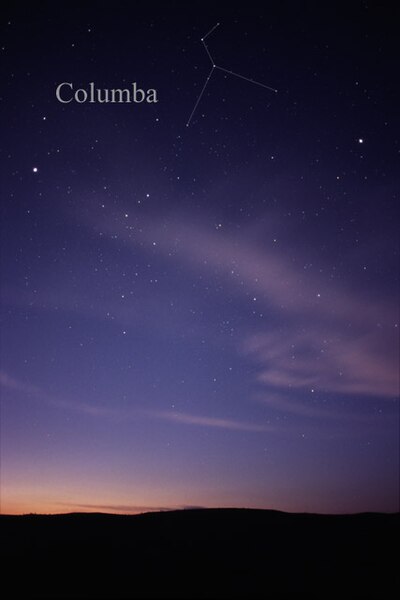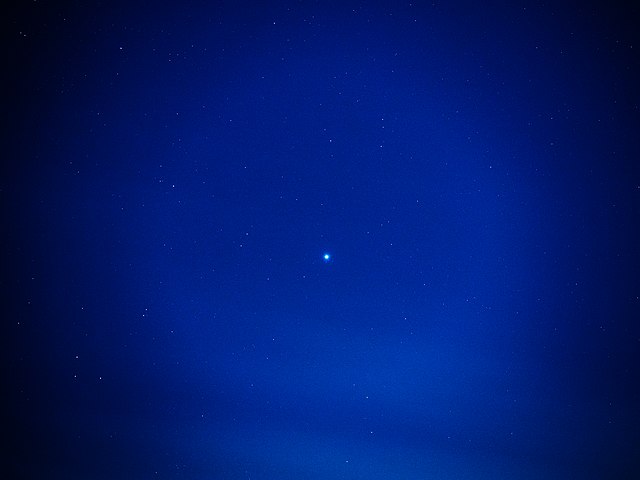Columba is a faint constellation designated in the late sixteenth century, remaining in official use, with its rigid limits set in the 20th century. Its name is Latin for dove. It takes up 1.31% of the southern celestial hemisphere and is just south of Canis Major and Lepus.
The constellation Columba as it can be seen by the naked eye.
The constellation seen as "Columba Noachi" in Urania's Mirror (1825).
Canis Major is a constellation in the southern celestial hemisphere. In the second century, it was included in Ptolemy's 48 constellations, and is counted among the 88 modern constellations. Its name is Latin for "greater dog" in contrast to Canis Minor, the "lesser dog"; both figures are commonly represented as following the constellation of Orion the hunter through the sky. The Milky Way passes through Canis Major and several open clusters lie within its borders, most notably M41.
Sirius A, the brightest star in the night sky, lies in Canis Major.
Canis Major as depicted on the Manuchihr Globe made in Mashhad 1632–33 AD. Adilnor Collection, Sweden.
Canis Major, observed above Kuantan (north is towards top right)
The stars of Canis Major as they can be seen by the naked eye; lines have been added for clarity.






